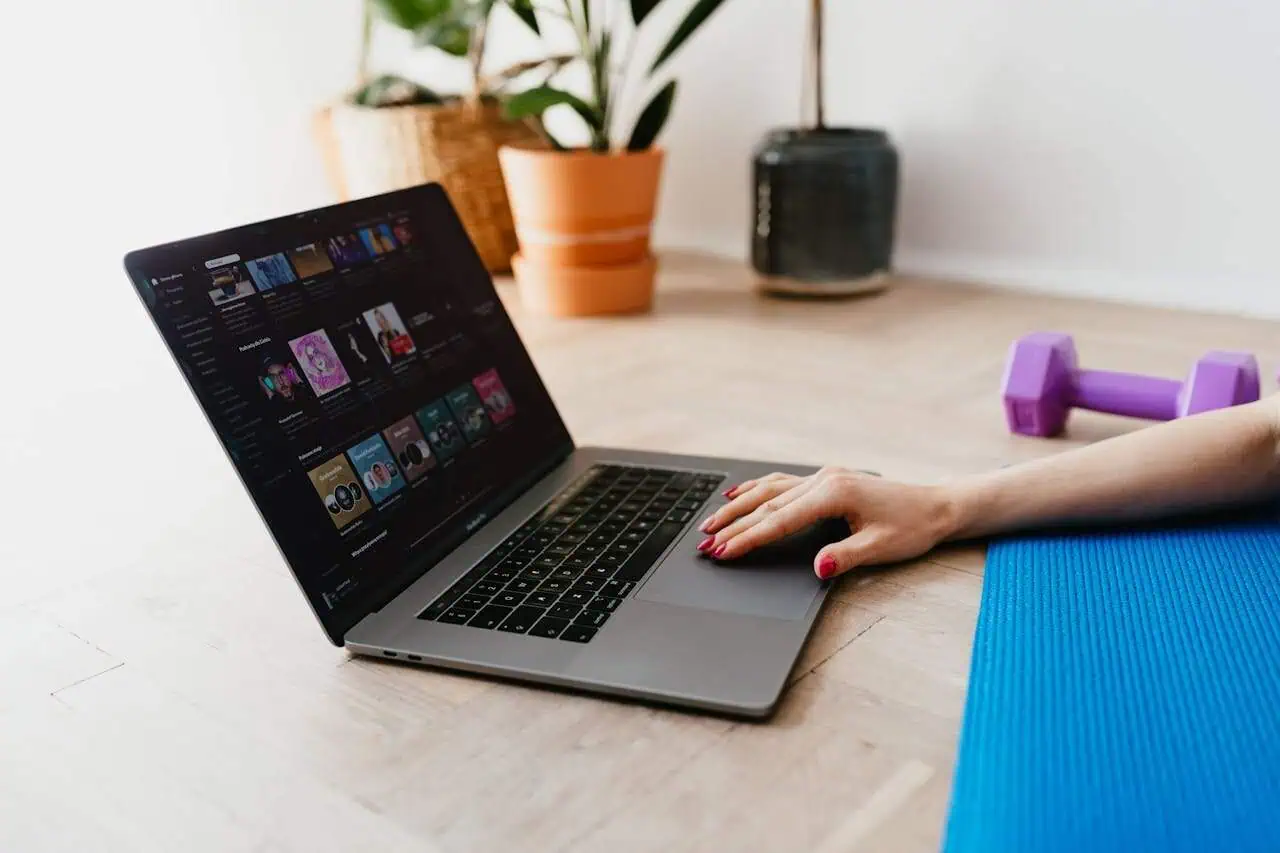What’s not to like about working remotely? Flexible schedule, not having to go to the office, working from your bedroom or your favorite coffeehouse… Your fitness might have something to say about this, though.
Think about it. If you’re at home all day, working in your pajamas, do you really feel like working out? If you’re struggling with this, you’re not alone. There are a lot of women who want an effective strength training regimen and they want it to fit perfectly into their schedule.
You’re in the right place because that’s exactly what we’re going to cover today! Sit back (at least for now) and see which exercises are the best and how to include them in your schedule.
Top 5 Strength Exercises For Remote Working Women
If you’re working remotely, you spend a good deal of time sitting down, staring at a screen. That sounds great for a couch potato, but a sedentary lifestyle can cause a lot of issues, so it’s important to stay active.
Strength training has a lot of benefits, like improving bone density, building lean muscle mass, and keeping your metabolism healthy.
Let’s see which workouts fit perfectly into your kind of lifestyle.
-
Bodyweight Squats
Good old squats, who hasn’t done them at least once? They’re a staple in most people’s fitness routines because they target multiple muscle groups that are crucial for functional strength and mobility – quads, glutes, hamstrings, and calves.
You don’t need any equipment for bodyweight squats and you can do it almost anywhere in your home. They help counteract the effects of prolonged sitting and improve posture and core stability.
They’re also a great way to maintain a healthy weight because they improve the strength of your lower body, enhance metabolism, and burn calories.
-
Push-Ups
Another classic. Push-ups strengthen your chest, shoulders, triceps, and core so, in short, they do a lot for your upper body strength and stability.
Push-ups can be tweaked to work for any fitness level and as far as space requirements, they’re minimal. If you’re on a break and need a quick energy boost, doing a few push-ups will do the trick. They promote good posture and improve your cardiovascular health.
For the convenience of performing this exercise, it is recommended to use a mat and wear clothes that will add comfort during the exercise.
-
Plank
Planks will engage your core, including your abs and lower back, which is essential for supporting posture and preventing back pain. Planks are super-efficient and they’re another exercise that needs hardly any space. All you need for this exercise is an exercise mat, comfortable clothes, and a little time.
When you’re sitting at a desk for long hours, you can mess up your posture and even develop issues with your spine (kyphosis, lordosis). Having a strong core can prevent this, so make sure to take some time to strengthen it.
-
Glute Bridges
This exercise targets your glutes and hamstrings, which are important for maintaining strong, functional hips and lower body. For this exercise, it is recommended to use a mat, such as a yoga mat, and comfortable clothes. Over time, you can also add a resistance band to vary this exercise.
Glute-bridges are low-impact and you can do them on a yoga mat or even a carpet. They fight the effects long hours of sitting cause because they activate and strengthen the posterior chain.
-
Deadlifts
You’ll need a barbell or dumbbells for these, but the good news is, these don’t take up too much space (but out of the two, dumbbells might end up being more space-saving and convenient). You may also need floor mats designed for weight training, which will be a great help in protecting your floor and reducing noise levels when you lower the barbell or dumbbells. Straps (like WBCM straps), will also be useful, as they can be used both at home and to take with you to the gym. Additionally, consider appropriate compression garments, which are not only comfortable but also contribute to an effective workout.
After we’ve reviewed the basic training equipment, let’s get back to the exercise. Deadlifts target a lot of muscles at the same time, so they’re super time-effective. They help build functional strength, which results in better performance in daily life and less risk of injury.
Combining Work and Training
If you want to stay healthy, you need to find a way to stay active while having a job that requires you to sit down most of the time.
The first thing to do is to decide where you want to work out. Working out at home is very convenient and cost-effective, plus there’s no need to commute to the gym.
You don’t have to restrict yourself to just a few basic exercises. Get a yoga mat, a kettlebell, jump rope, barbell, straps… Tools and accessories can add a lot of versatility into your training, and a lot of them are compact and easy to store, so there’s no reason not to use them at home.
You can also include some mini workout breaks during your work hours, like stretching or short walks, to counteract the negative effects of sitting.
If you want fitness classes and a wider range of workouts available, there’s always the gym, of course. A lot of people choose to hit the gym after they’re done with work, but going to the gym in the morning has a lot of benefits, too.
Your energy levels are higher and, after you’re done with your work, all there is left to do is to relax. But this is something that comes down to personal preference, so choose whatever is more enjoyable for you.
The key is to find a way to approach this in a balanced manner and make it fit your lifestyle. Experiment, do tweaks, and remember that the right way to go about it is the way that feels right to you.
FAQs
How much time do I need to spend on strength training each week?
Go for 2-3 sessions per week, with each session lasting from 30 minutes to an hour (naturally, you can do more than just an hour, but don’t have a session lasting less than 30 minutes). Make sure to rest properly between your sessions and don’t give up no matter how much motivation you may lack. Progress comes from consistency, and 3 hours of exercise each week really isn’t too much to ask for.
What are some quick and effective strength exercises I can do during work breaks?
You can choose between bodyweight squats, push-ups (even desk push-ups), chair dips, and calf raises. Do 10-15 reps (or hold for 30-60 seconds if you’re doing a plank), depending on what your fitness level allows.
Conclusion
Working remotely doesn’t have to go hand in hand with a sedentary lifestyle. As a matter of fact, it shouldn’t, because your health won’t thank you for it. You don’t need to work out for hours every day and you don’t need to do anything insanely intense.
If you work out 2-3 times a week, you’ll stay healthy, it will be easier for you to keep your weight in check, and you’ll feel better – physically and mentally.
References:
- “Physical inactivity a leading cause of disease and disability, warns WHO,” World Health Organization, https://www.who.int/news/item/04-04-2002-physical-inactivity-a-leading-cause-of-disease-and-disability-warns-who (accessed May 13th, 2024)
- “Strength training builds more than muscles,” Harvard Health Publishing, https://www.health.harvard.edu/staying-healthy/strength-training-builds-more-than-muscles (accessed May 13th, 2024)

